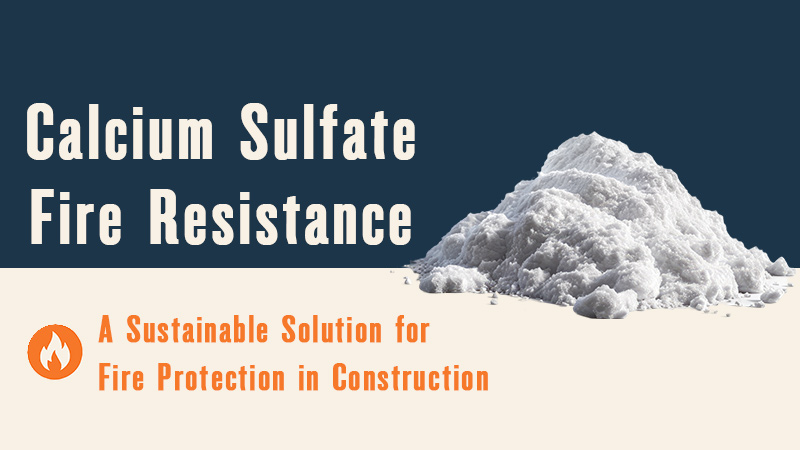
What are Calcium Sulfate Properties and types?
Calcium sulfate dihydrate is a chemical obtained from gypsum, a natural compound. It is used in the preparation of calcium sulfate and calcium sulfoaluminate. It is a source of sulfur and sulfuric acid. It is hygroscopic in nature and non-combustible, and it is stable under normal temperatures and pressure. The decomposition of calcium sulfate dehydrate results in sulfur oxide and calcium oxide.
Gypsum is a mineral categorized as a calcium sulfate mineral, and its chemical formula is calcium sulfate dihydrate, CaSO4 2H2O. However, a broader definition includes all the calcium sulfates, including calcium sulfate hemihydrate, which is known as plaster. This calcium salt is used for a wide variety of purposes. such as building materials, as desiccant, in dentistry as casting material, in medicine for immobilizing casts and as tablet excipient.
It exists in the many forms and the states of the hydration. The major application of the calcium sulfate (CaSO4) is to manufacture the plaster of Paris and the stucco. These applications exploit the fact that powdered and calcined forms of the calcium sulfate a moldable paste after being hydrated. and hardens as the crystalline calcium sulfate dihydrate.
Properties of calcium sulfate
- This material is solid and has a powdery state.
- Its color is crystal white.
- This chemical product is completely odorless.
- It is stable at room temperature.
- It is a chemical substance with a straight rhombic crystal structure.
- Its melting point is 1450 degrees Celsius.
- It is one of the most common types of sulfate in the world.
- It does not dissolve in water and ethanol.
- It is a non-toxic substance and is safe for humans.
It is non-flammable and will not catch fire if placed near heat.
Additional Physical and Chemical Characteristics
Calcium sulfate demonstrates low solubility in water (approximately 0.21 g/100 mL at 25°C), which makes it valuable in applications where a controlled setting time is required, such as in plasters and cements. It exhibits moderate compressive strength when set, contributing to its usage in construction and dental molds. Furthermore, its biocompatibility has led to its use in bone graft materials and surgical plasters.
It is also noteworthy that calcium sulfate demonstrates slight expansion during setting, which helps in achieving accurate molds and casts. This property is highly beneficial in dentistry and sculpture, where precision is crucial.
Types of Calcium Sulfate
The above compound is insoluble in water and can be covered by two H₂O water molecules. Depending on the number of water molecules that surround these chemical compounds, different types of it emerge:
-
Anhydrous Calcium Sulfate (CaSO₄): This is the dry or anhydrous form that does not contain any water molecules in its structure. It is primarily used as a drying agent (desiccant) in laboratories and industries.
-
Calcium Sulfate Hemihydrate (CaSO₄·½H₂O): Commonly known as plaster of Paris, it contains half a molecule of water. When mixed with water, it forms a paste that hardens as it rehydrates to the dihydrate form.
-
Calcium Sulfate Dihydrate (CaSO₄·2H₂O): This is the naturally occurring form known as gypsum. When heated, it loses water and transforms into the hemihydrate or anhydrous forms.
Applications Based on Types
-
Anhydrous Calcium Sulfate is widely used in food industries as a firming agent, in brewing to control pH, and in laboratories as a drying agent due to its strong moisture absorption capacity.
-
Calcium Sulfate Hemihydrate (Plaster of Paris) is used extensively in construction, medical casts, art molds, and decorative elements due to its quick setting and moldable properties.
-
Calcium Sulfate Dihydrate (Gypsum) is primarily used in cement production, soil conditioning in agriculture (as a source of calcium and sulfur), and in producing wallboards and plasters in construction.







